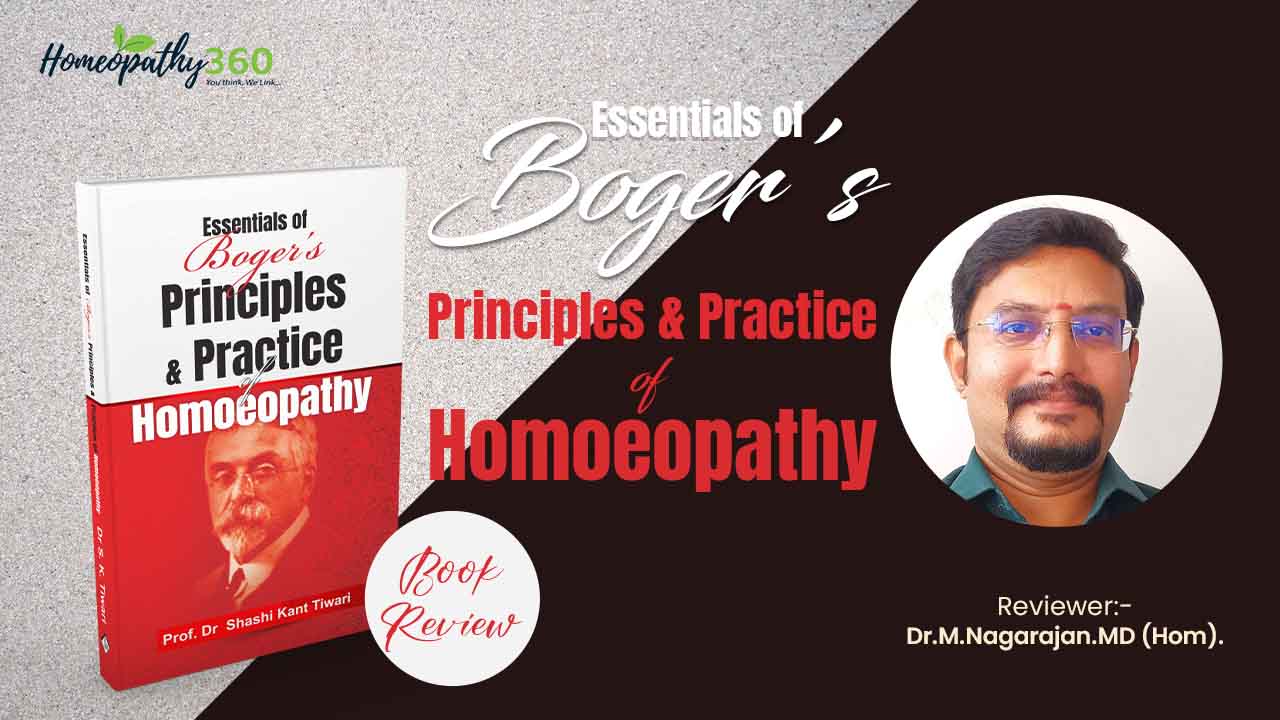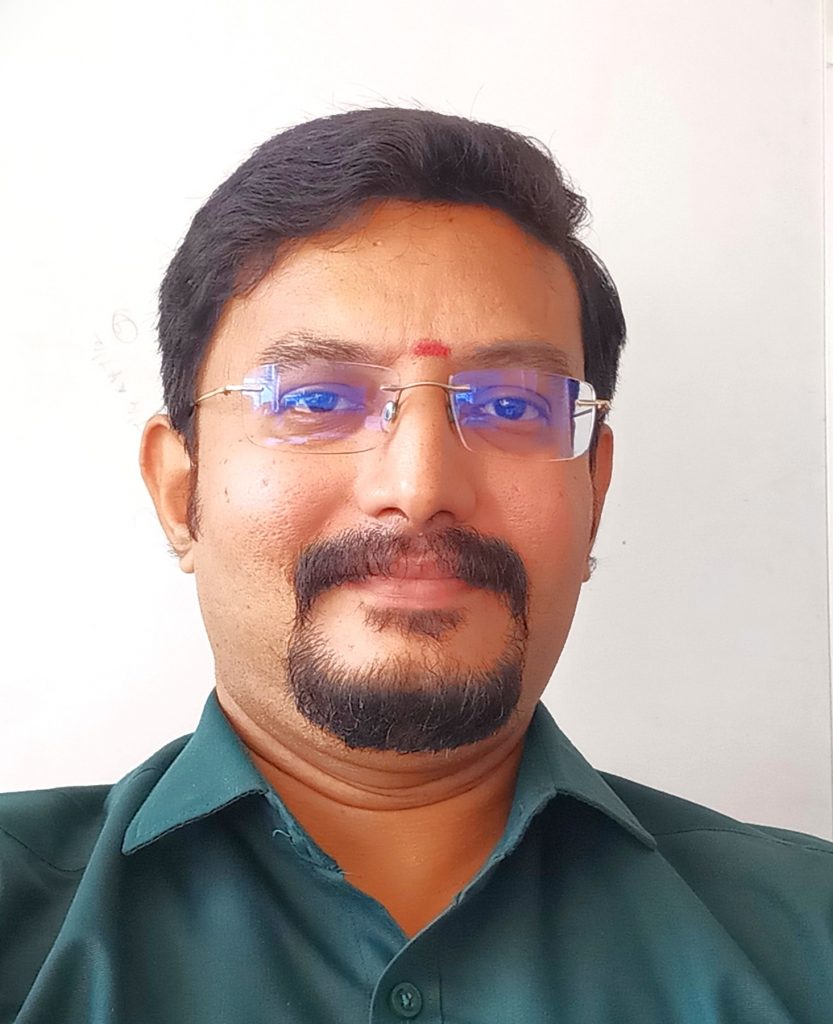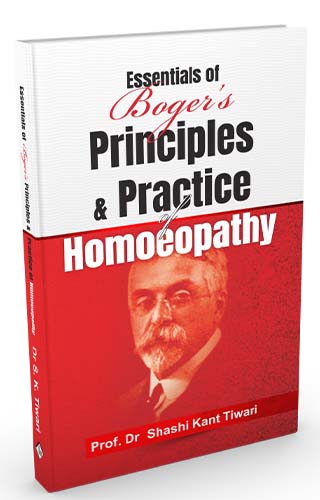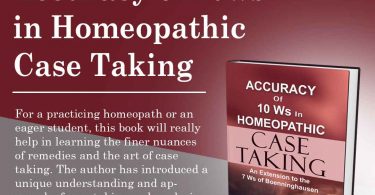
I have read the book “Essentials of Boger’s Principles & Practice of Homoeopathy” by Prof. Dr. S.K. Tiwari.
I feel this one as a long-expected book come true in reality. As an Organon teacher for nearly 16 years, I have ever felt the philosophies of Stuart Close, H.A. Roberts clearly explained theoretical aspects have not been rightly utilized in practice since they have not devised any special methods but just elaborated the theory. Unlike them, Dr. Boger, who has devised the methodology of finding a remedy, incorporated Pathological generals, wrote repertories but his methodology has not yet been recognized or given as a textbook in homoeopathic syllabus.
Kent’s Philosophy which shall be easily understood by eastern part of the world (the Concept of spirituality is more deep-rooted in eastern minds ever since the history) have taken its thriving and every student and a beginner of homoeopathy finds it easier to understand and apply it in practice.
But the first ever concept introduced by Boenninghausen, has lost its view since there are no forms of his writings available as direct textbooks to the homoeopathic students.
Likewise, of the great sage, Dr. Boger, who incorporated pathology into homoeopathic concept innovatively in those olden days, while every other was speaking about symptoms and totality. He was the first to speak daringly the nature of pathology is an individuality in the patient and without considering it the totality is incomplete.
Like an old saying “History always repeats”, the concepts of Boger which was once forgotten amidst of other philosophies are now explored in recent years by many homoeopaths and used in their practice as shown in their writings and seminars. But there are no proper books which represent Boger’s concepts, ideologies to students. Making a student or a beginner to be aware of Boger’s treasure concept by this kind of a book makes him to face the modern medical contemporaries boldly in terms of pathologic language. I’m sure that this book containing the collected lectures and articles of will clearly represent his views on various areas. Unlike every other philosophy book, throughout every chapter, Boger explains each concept practically with his case examples. This makes the book really exciting and interesting.
It is a very tremendous task to collect all these writings. Thanks to Dr.S.K. Tiwari sir for this compilation &presenting to the homoeopathic profession. I sincerely recommend that this book shall be added to the academic syllabus in both UG and PG curriculum. My best wishes for this book to be accepted the homoeopathic syllabus committee.
My sincere request to the author is to make another venture to give us the writings of Dr. Boenninghausen also.
The author has spectacularly arranged the chapters as to how a homoeopathic understanding should be learnt, though they were given in different period of years by Boger. This makes it a very apt book for a student of homoeopathy.
- One of its first kinds of Boger’s book.
- Perfectly arranged chapters for student teaching & learning.
- Covers all aspects of Homoeopathy – like Theory, Case taking, indications for remedy selection, grading of symptoms, repertory, dose, repetition, case examples, Materia medica, veterinary homoeopathy, etc.
- Presented in original unaltered form of Boger’s writings.
- Boger’s explanations on how a college teaching of Homoeopathy should be are given first 4 chapters. Almost in every chapter Boger insists on the ideal way of teaching homoeopathy.
- Boger’s view on how homoeopathic research should be done given in 3rd chapter is need of the present homoeopath to prove our field.
- Chapter 7 describes practical examples of what homoeopathy could do at its best in incurable cases.
- Chapter 8 describes about the proving, necessity of complete proving of latest medicines and Boger’s schema for proving, recording of drug symptoms & his own proving verification of clinical symptoms.
- Throughout the chapters Boger has recommended many valuable books to study for a homoeopath.
- Chapter 11 lays emphasis on peculiar, characteristic symptoms.
- In chapter 13, vital energy, Boger speaks about practical tips to solve zig zag cases and gives use of “do nothing remedies”. These practical tips are explained in theoretical point of view.
- In chapter 14, he gives many practical clues of finding a remedy. Finding more of such practical & clinical tips in a philosophy book will sure to make a student reader more enthusiastic.
- In chapter 15, taking the case, Boger insists on the complete symptoms and importance of time modality in cases.
- In chapter 18, 19 & 20, finding the Similimum, Boger has done a very practical research experiment in patients to analyze the importance of family history.
- In chapters 22, 23, 24 –Boger emphasizes about various causations and modalities for finding out a remedy for the case.
- In chapter 33, Boger explains how a portrait of disease has to be formed. He places Modalities as the highest ranked symptom as they are the natural modifiers of the disease, followed by mind, sensations, objective aspects, and lastly the part affected. In chapter 35, he stresses on seat of disease apart from previously said.
- In chapter 34, he solves the problem of dosage by discussion with several veterans.
- In chapter 36, he gives a practical protocol for the follow up of a case and how to deal each situation. This is a very simplified version of Kent’s 12 observations which a student might find it still practically easier. He also gives the repetition criteria in the same and next chapter 37. The chapters on second prescription in other philosophies may be related with this one. Here the opinion of other doctors like H.C. Allen and Wesselhoeft adds value.
- Chapters 38-40 are of theoretical interest.
- Chapter 41, about Suppression is very interesting as it is given in the form of a discussion of cases among doctors who faced situations.
- Chapter 42 expresses a paper about the Natural law which states that every remedy expresses a concrete entity. It is just as similar as the Drug Picture of Kent or Constitution of Clarke. Many Stalwarts had their discussion on the chapter and final verdict is given by Boger as to read between the lines of materia medica.
- Chapter 43 describes a controversial view of Boger, Allen & other with Hering’s clinical symptom to be included in homoeopathic arena. And finally, Boger gives a conclusion on how a clinical symptom should be used in materia medica.
- Chapter 44, speaks about the significance of recent symptoms in the treatment of chronic disease, this settles up the doubts of many doctors, whether to interfere or not.
- Chapter 45-58 gives therapeutics with many examples makes the study more interesting. This kind of therapeutic study will sure to entertain and engrave in the minds of a beginner.
- Chapter 59 gives an idea of how to differentiate remedies based on the patient’s relative sensitiveness.
- Chapter 65 gives an idea though our remedies are proved in humans, it’s been effective in treating animals ever since the olden days based on observations.
NAME : Dr.M.Nagarajan.MD (Hom).,
CADRE : Associate Professor
TEACHING EXPERIENCE : 16 years
DEPARTMENT : Department of Organon & Homoeopathic Philosophy
COLLEGE : Dr. Hahnemann Homoeopathy Medical College & Research Centre,
Rasipuram, Tamil Nādu.
Positions : As Internal & external examiner, Question paper setter in different colleges
under TN Dr.MGR Medical University, Tamilnadu and NTR University,
Andhra Pradesh


Title: Essentials of Boger’s Principles & Practice of Homeopathy
Author: DR SK TIWARI
ISBN: 9788131928219
Imprint: B.Jain Regular
Language: English
Pages: 326


